|
Landers,
Frary & Clark in World War Two
New Britain, CT
1865-1965
This page added 2-14-2021.
Landers, Frary & Clark was
a home products company that specialized in cutlery. It also
made many products that are used daily such as toasters, coffee pots,
food scales, coffee grinders, and other kitchen and household
appliances. Yet, during World War Two,
Landers, Frary & Clark
produced what has become one of the iconic weapons of the war, the
Multiple Caliber .50 Machine Gun Mount M45, more commonly known
as the Maxson Quadmount. The
Landers, Frary & Clark M45 gun
mount not only served in World War Two, but also in Korea and Vietnam.
In Vietnam it was used by both the French and the American forces in
that long war.
In 1965
Landers, Frary & Clark was
purchased General Electric, which still markets several of the products
today.
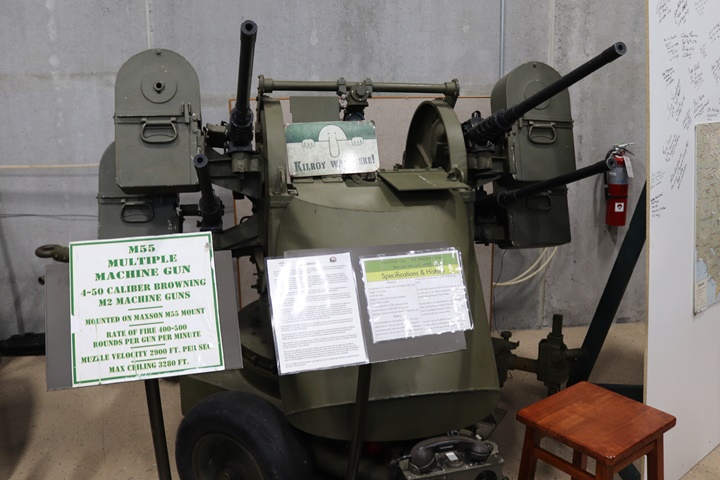
When the M45 is mounted onto an M20 trailer,
the combination was known as the M55, as seen here at the Military
Veterans Museum in Oshkosh, WI.
Landers, Frary & Clark was one
of two companies that built the M45. Author's photo.
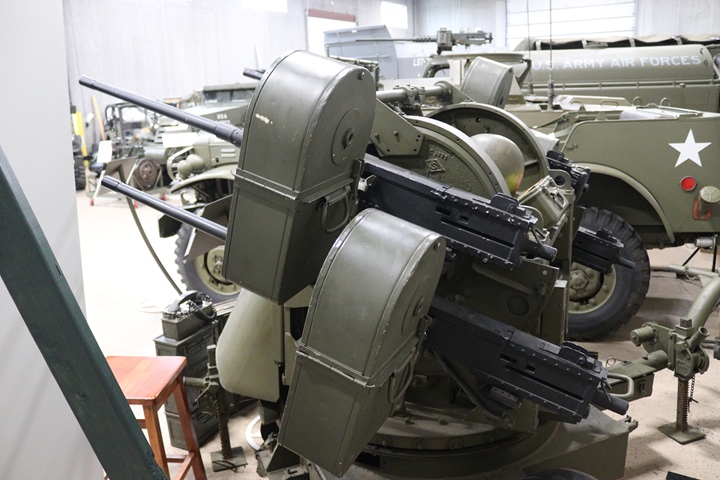
Landers,
Frary & Clark built 12,049 M45
and M45C Quadmounts during World War Two. This was 68% of the total built.
Author's photo.

Landers, Frary & Clark
won the Army-Navy "E" Award four times.
Landers, Frary & Clark World War Two Production:
1,882 Multiple Caliber .50 Machine Gun Twin
Mount M33s, 8,297 Multiple Caliber .50 Machine Gun Mount M45s,
3,752 Multiple Caliber .50 Machine Gun Mount M45Cs, M54 fuzes,
mess hall and mess kit cutlery, electrical washing machines, water
heaters, ranges, and electric generators.
At the end of 1941, the company was scheduled
for 60,000 M54 fuzes per month. These were used on 155mm shells.
By June 1942 Landers, Frary & Clark
was scheduled for 1,000 .50 caliber gun mounts per month.
Landers, Frary & Clark M33 and M45 Gun Mounts
Accepted by Detroit Ordnance, US Army
The information below comes from "Summary Report of
Acceptances, Tank-Automotive Material, 1940-1945."
Published by Army Services Forces, Office, Chief of
Ordnance-Detroit, Production Division, Requirements and
Progress Branch
January 21, 1946. |
|
Mount Type and Company |
1942 |
1943 |
1944 |
1945 |
Total |
|
M33 |
428 |
1,454 |
|
|
1,882 |
|
M45 |
|
4,961 |
3,336 |
|
8,297 |
|
M45C |
|
|
2,023 |
1,729 |
3,752 |
|
Totals |
428 |
6,415 |
5,359 |
1,729 |
13,931 |
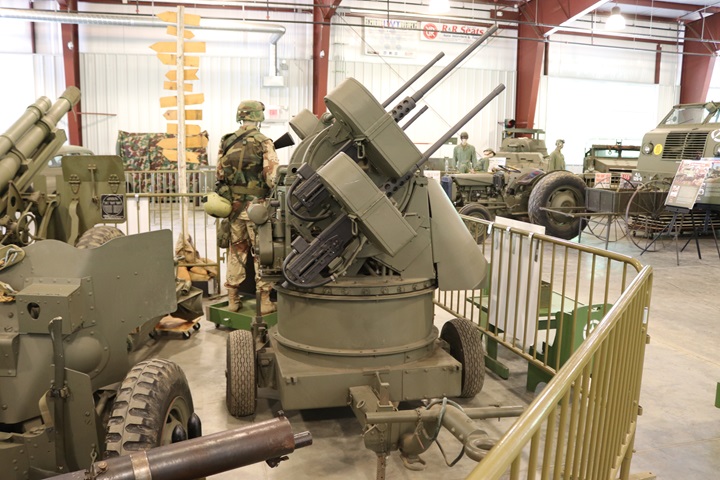
The Multiple Caliber .50 Machine
Gun Mount M45 is more commonly known as the Maxson Quadmount. It
is
named after W.L. Maxson who invented the weapon. This is one of
the few weapons of World War Two that is known by the inventor's name. The M45 was the second multiple gun mount that W.L.
Maxson invented. The first was the M33 twin .50 caliber mount,
which was standardized by Army Ordnance on 2-26-1942 as the Twin Caliber
.50 Multiple Machine Gun Mount. It was primarily mounted on the M13
halftrack. While W.L. Maxson invented and built prototypes of his
gun mounts, his company did not receive the production contracts.
These were won by Kimberly-Clark and Landers, Frary & Clark. Maxson
did produce the variable speed drives for the weapons.
Author's Note: For the M45
Quadmounts shown on this page, no information is available as to which
of the two companies built each unit.
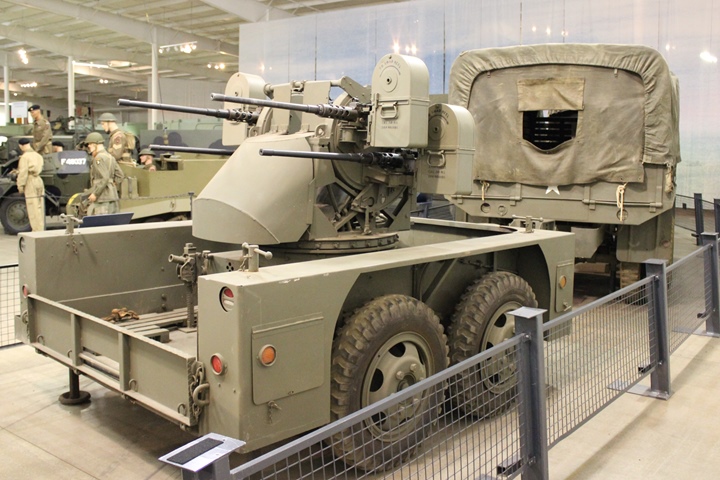
The M17 trailer was one of the methods of
transporting the M45 during World War Two. Author's photo.
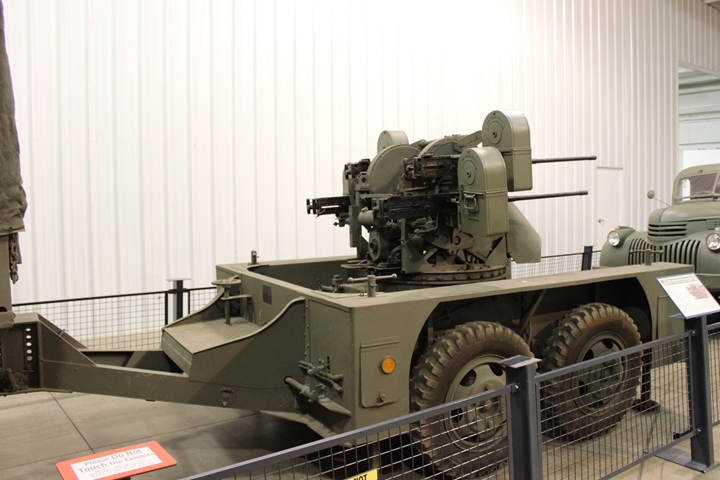
Author's
photo.
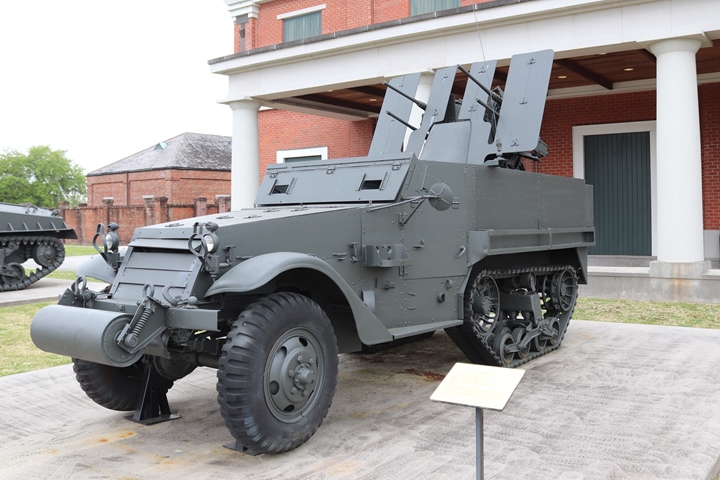
The most popular method of transporting the M45 was on an M16
half-track.
The Louisiana Army National Guard used this
type of weapon during World War Two to shoot down 127 German aircraft.
The 105th Anti-Aircraft Artillery Battalion destroyed the aircraft while
operating in North Africa, Sicily, and Italy. Author's photo.
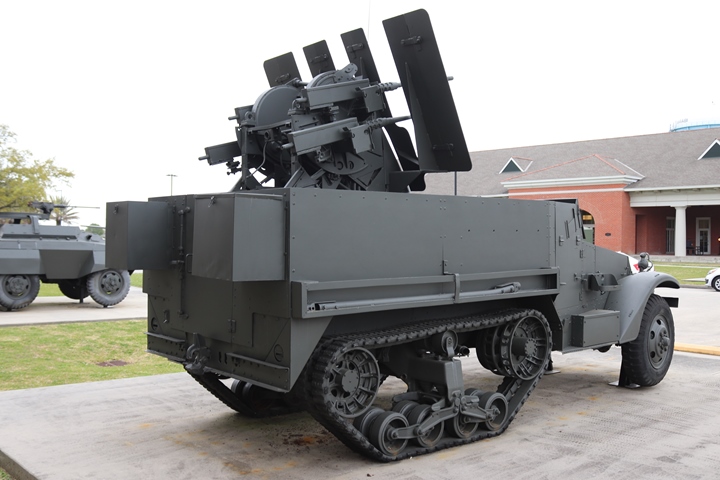
Author's
photo.
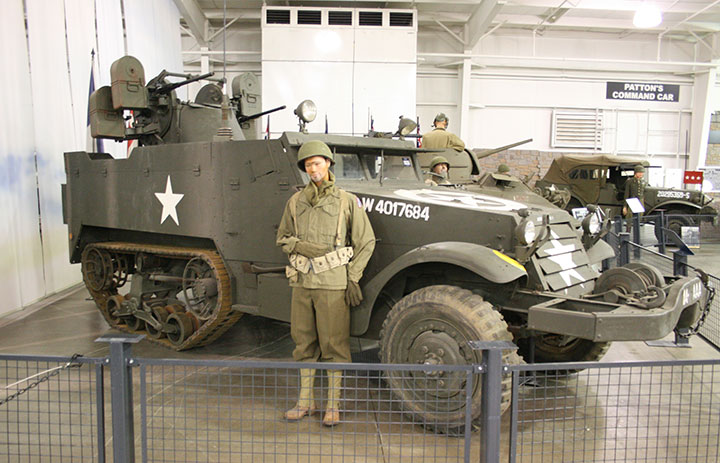
This White M16 Halftrack was on
display at the now closed National Military Historical Center
in Auburn, IN. Author's Photo.
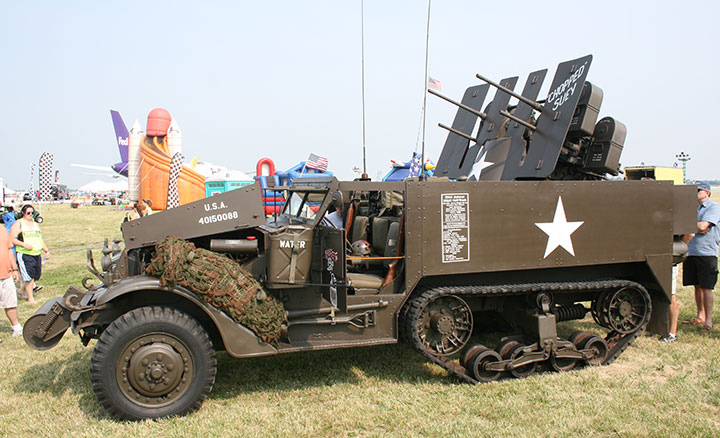
This
M16 with a Maxson Quadmount was photographed at the Dayton Airshow.
Author's photo.
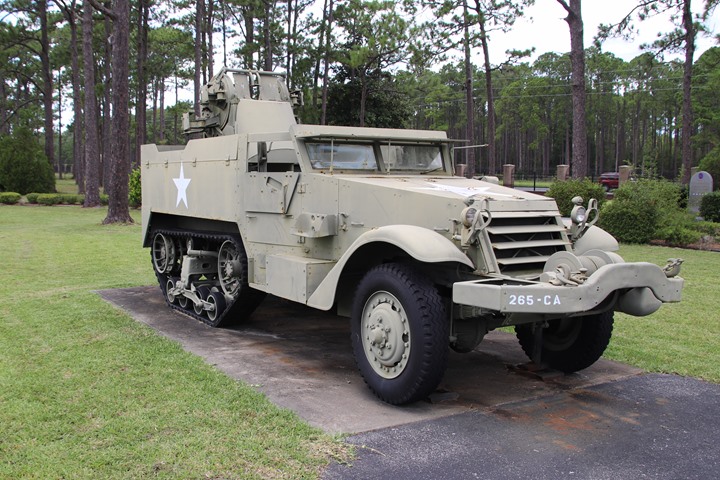
This is one of three half-tracks and two M16 versions on display at Camp
Blanding, FL.
Author's photo.
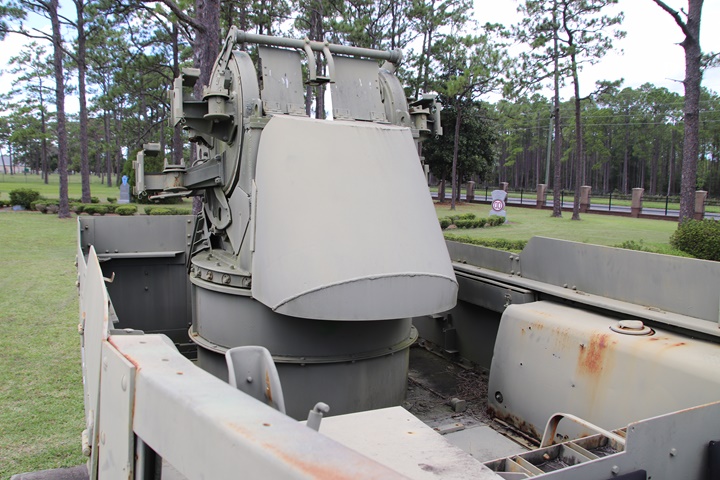
In
the M16 the M45 Maxson mounts had spacers between it and the vehicle
floor for clearance when rotating. These were added in 1952 before
the half-tracks were sent to Korea. This allowed the guns to
depress to defend against human wave attacks. Author's photo.
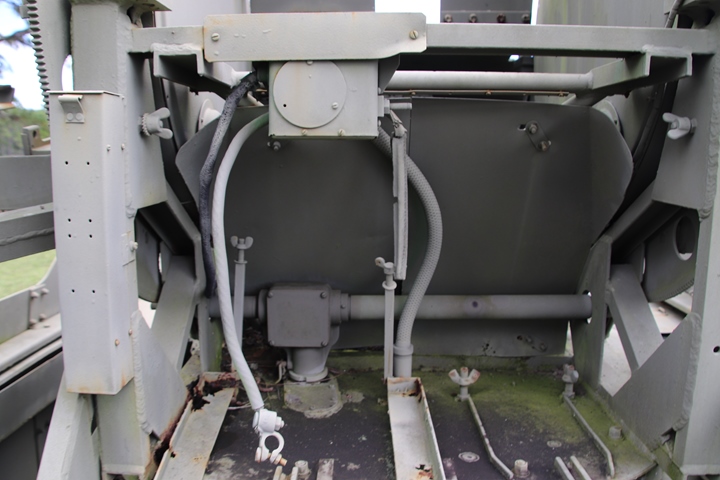
The internal drive system has been removed. This view shows that
the turret was constructed using metal weldment fabrication. The unit weighed 2,400
pounds. Author's photo.
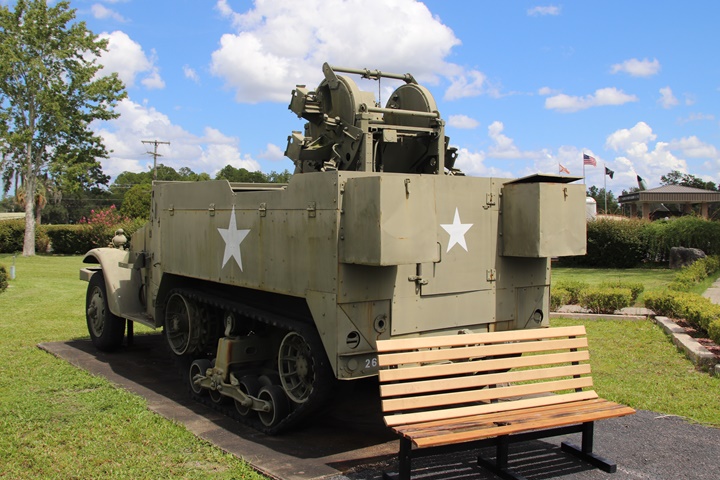
This
is the second M16 on display at Camp Blanding. Author's photo.
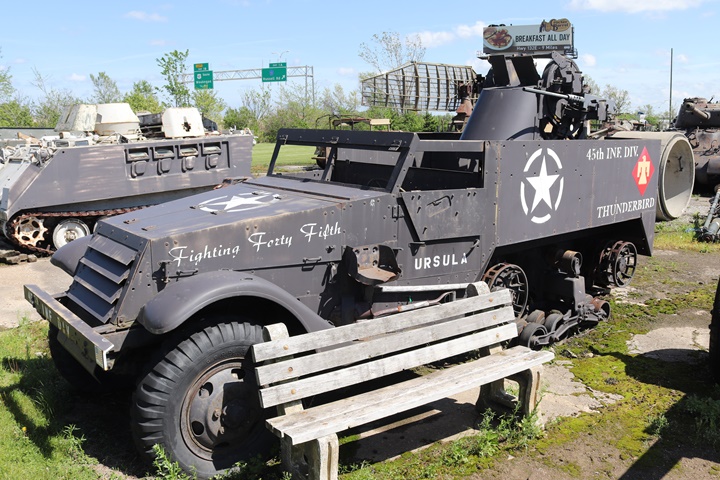
This M16 with a Maxson M45 mount is at the Russell Military Museum in
Zion, IL. Author's photo.
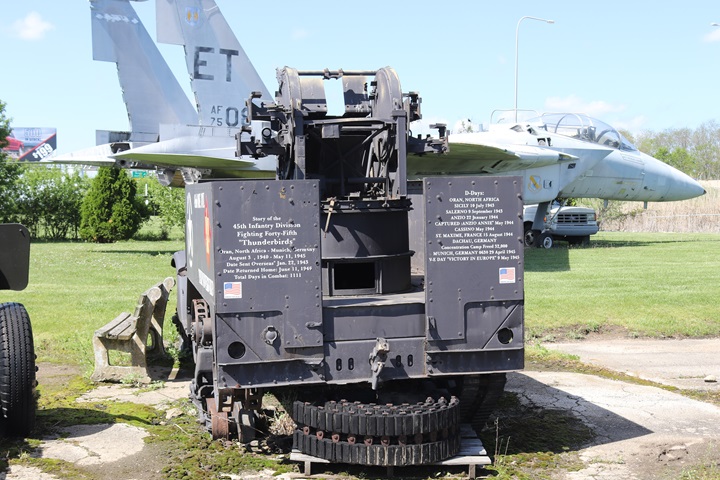
It is not very often that one can frame a photo with an F-15 in the
background. Author's photo.
|















